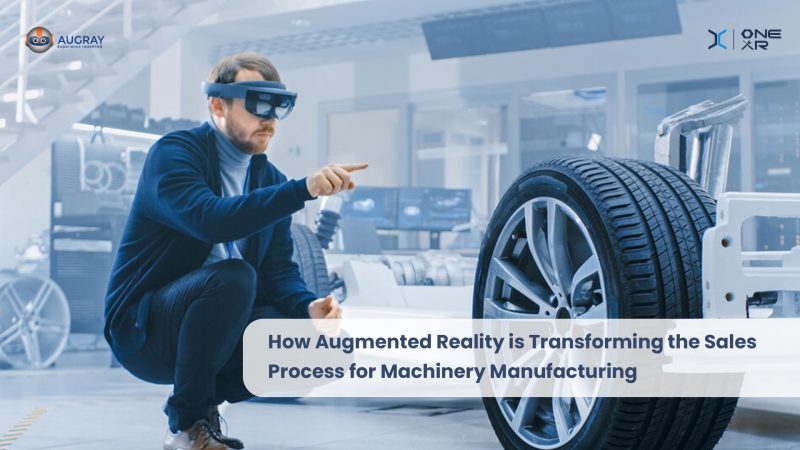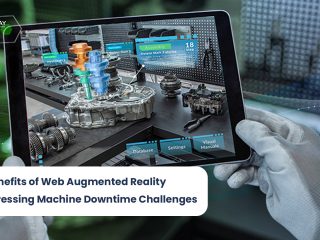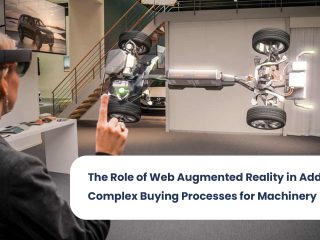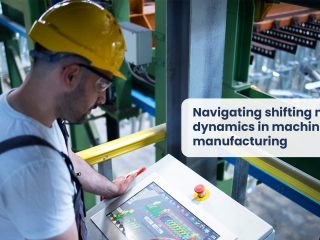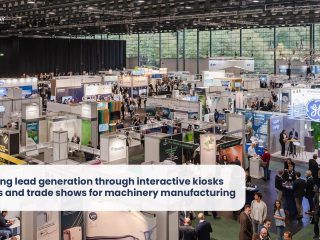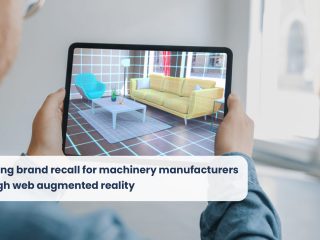Augmented reality (AR) technology is revolutionizing the sales process for machinery manufacturing. By leveraging AR, companies can provide customers with an immersive experience that helps them visualize and understand the product better.
AR can help companies streamline the sales process, reduce costs, and improve customer satisfaction. In this blog, we’ll explore how AR is transforming the sales process for machinery manufacturing and how companies are using this technology to enhance their sales process.
Understanding Augmented Reality Technology
Augmented reality is a technology that overlays digital content onto the physical world. It uses cameras, sensors, and other devices to create a virtual experience that enhances the real world. AR technology can be used on smartphones, tablets, and other devices to provide an immersive and interactive experience for customers.
Enhancing Product Visualization
One of the key benefits of using AR in machinery sales is that it enhances product visualization. Customers can use AR to visualize the product in 3D, explore its features and benefits, and even operate it virtually.
This provides a more engaging and interactive experience that helps customers better understand the product and its capabilities.
For example, Caterpillar, a leading machinery manufacturer, uses AR technology to provide customers with an immersive experience of their products. Customers can use AR to explore the products and their features and benefits in a virtual environment.
Streamlining the Sales Process
AR technology can help streamline the sales process for machinery manufacturing. By providing customers with an immersive experience, companies can reduce the need for physical product demonstrations and site visits. This can save time and money for both the company and the customer.
For example, Volvo uses AR technology to showcase its products at trade shows and events. Customers can use AR to explore the products and their features and benefits without the need for a physical demonstration.
Reducing Costs
AR technology can also help reduce costs for machinery manufacturing companies. By providing customers with an immersive experience, companies can reduce the need for physical product demonstrations and site visits. This can save on travel costs, shipping costs, and other expenses associated with in-person demonstrations.
For example, Siemens, a leading machinery manufacturing company, uses AR technology to provide remote service and support for their products. Customers can use AR to provide real-time feedback and receive remote assistance without the need for a physical site visit.
Improving Customer Satisfaction
AR technology can also help improve customer satisfaction for machinery manufacturing companies. By providing customers with an immersive and interactive experience, companies can increase customer engagement and understanding of the product. This can lead to increased customer satisfaction and loyalty.
For example, Case New Holland, a leading machinery manufacturing company, uses AR technology to provide customers with a virtual tour of their facilities. This provides customers with a better understanding of the company’s capabilities and can improve their overall satisfaction with the company.
Employee Training and Onboarding
Augmented reality can also be utilized in employee training and onboarding processes in the manufacturing industry. By creating AR simulations, new employees can be trained on complex machinery and processes without the need for actual physical machines, which can be costly and time-consuming.
For instance, Caterpillar, a manufacturer of heavy machinery, uses AR technology to train their employees. The company created an AR training program called “Cat Lexion AR” that allows employees to see the internal workings of their machines and learn about the various parts and how they work together.
This allows employees to gain a deeper understanding of the machinery and how to maintain it, reducing the risk of damage or accidents caused by human error.
After Sales Service and Maintenance
AR technology can also be used to provide after-sales services and maintenance. With AR-enabled devices, customers can easily identify and diagnose any issues with their machinery, and service technicians can remotely guide them through the repair process, reducing downtime and increasing productivity.
For example, Porsche uses AR technology in their service centers to improve their maintenance processes. The company developed an AR application that enables service technicians to visualize and diagnose any issues with Porsche cars in real-time. This enables them to identify the problem quickly and provide precise instructions to repair it.
Challenges and Limitations
While the benefits of AR technology are significant, there are also some challenges and limitations that companies should be aware of. These include:
Cost
One of the primary challenges associated with AR technology is cost. Developing AR applications and creating AR content can be expensive, particularly for smaller companies. However, as the technology becomes more widespread, costs are likely to decrease.
Technical Expertise
Another challenge is the need for technical expertise to develop and maintain AR applications. Companies may need to hire additional staff or partner with external firms to leverage AR technology effectively.
Hardware Limitations
AR technology is also limited by hardware constraints. For example, some AR applications may require specific devices or sensors that are not widely available or accessible. This can limit the reach of AR technology and make it less accessible to potential customers.
User Experience
Finally, the user experience of AR technology can be a challenge. While some users may find AR applications engaging and intuitive, others may find them confusing or difficult to use. Companies will need to carefully design and test their AR applications to ensure that they provide a positive user experience.
Weighing in all the pros and cons we can surely say that augmented reality is revolutionizing the machinery manufacturing industry by transforming the sales process.
By leveraging AR technology, companies can showcase their products in a more engaging and interactive way, allowing customers to experience the machinery in a realistic way without the need for physical prototypes.
AR can also streamline the sales process, enhance customer engagement, improve employee training and onboarding, and enable after-sales services and maintenance.
As AR technology continues to evolve, we can expect it to become even more prevalent in the machinery manufacturing industry and revolutionize the way machinery is sold and maintained.
